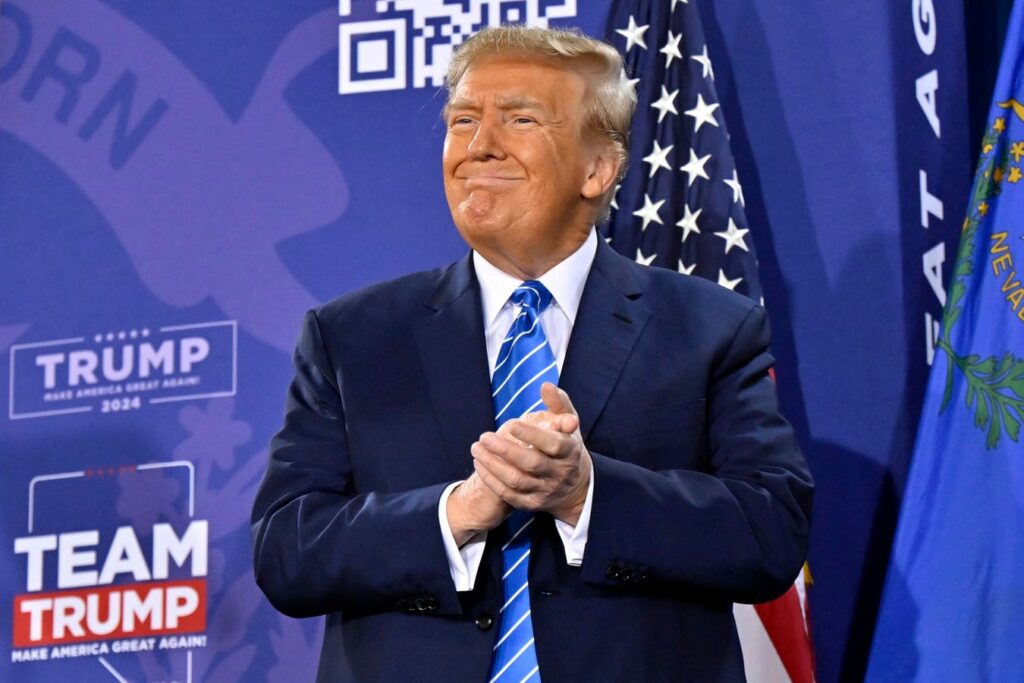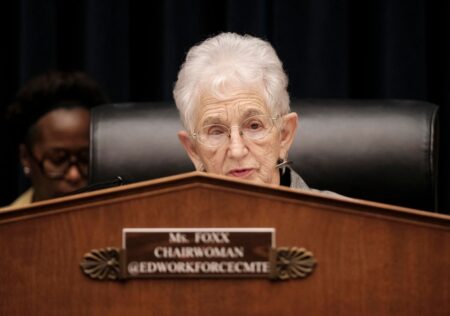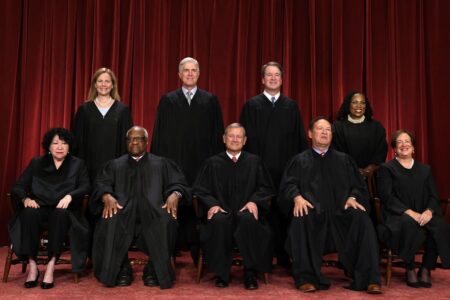GOP presidential candidate Donald Trump’s tariffs would raise a lot of money—$2.8 trillion over 10 years, according to the Tax Policy Center. But even that would fall far short of paying for all the ambitious ideas he claims it would fund. Indeed, his campaign promises likely would add trillions of dollars to the federal debt.
At various times in the 2024 presidential campaign, Trump has said his tariff revenues would replace the income tax, finance an unspecified child care initiative, create a US sovereign wealth fund, eliminate the federal budget deficit, and even begin to pay down the $28 trillion public debt.
Democratic presidential candidate Kamala Harris has her own list of costly promises that appear to be only partially offset by proposed tax hikes. But Trump’s tariff revenue would fall far short of paying for all his promises, though it is impossible to know since they mostly are unspecified.
And Trump would inevitably be caught in the same fiscal trap that so many other policymakers have faced: Once you use revenues to pay for new programs or tax cuts, those funds are no longer available to reduce deficits. More often than not, the result is even higher deficits and debt.
Indeed, The Committee for a Responsible Federal Budget estimates that Trump’s campaign proposals would increase the federal debt by $7.5 trillion over the next decade.
How Much Would Tariffs Raise?
While the former president has pitched many different tariff plans over the course of the campaign, TPC analyzed one version he promotes often, a 10 percent tax on all goods imported into the US and a 60 percent levy on Chinese imports. It would raise about $3.7 trillion in gross tariff revenues over the next decade.
But the tariffs would increase net federal revenues by much less—about $2.8 trillion. That’s because they’d significantly raise prices of imported goods, which would mostly be passed on to consumers. The Federal Reserve could raise interest rates to offset those price increases. But that likely would reduce profits of US corporations and incomes of US workers, lower projected corporate and individual tax revenues, and offset nearly $1 trillion of increased tariff revenue.
How would Trump spend the added revenue?
Could tariffs replace the income tax? Not even close. They’d replace only about 8 percent of the $34 trillion in federal individual income tax revenue the Congressional Budget Office expects the Treasury to collect over the next decade. They’d even fall short of paying the $4 trillion cost of extending the 2017 Tax Cuts and Jobs Act.
Could they fund other tax cuts?. Trump has promised many other tax cuts, including exemptions for tip income, overtime pay, and Social Security benefits, repealing the cap on the state and local tax (SALT) deduction, and reducing the corporate tax rate to 20 percent for some companies and 15 percent for others. All of those ideas would cost at least an additional $4 trillion, $1.2 trillion more than the income his tariffs would generate.
Could tariffs pay down the national debt? The public debt currently is about $28 trillion and CBO expects it to rise to $50 trillion by 2034. CBO projects the 2025 deficit will approach $2 trillion. By themselves, Trump’s tariffs would lower this year’s deficit by about $200 billion, or roughly 10 percent. They’d barely make a dent in the projected debt.
How about financing a sovereign wealth fund? Trump has provided no details on his idea to create a US government investment fund, but has promised it would be the biggest in the world. Currently, that honor belongs to Saudi Arabia, with a fund it values at about $925 billion. Trump could create a comparable US investment fund with about one-third of his tariff revenue. But that would leave less than $2 trillion for all his other initiatives.
Could tariffs fund child care? Trump has not specified what child-related programs he supports. But his running mate, Sen. JD Vance (R-OH) has endorsed a $5,000 Child Tax Credit (CTC) for all parents, regardless of income, which could pay for services such as child care. While Trump has not publicly commented on the plan, it is at least a hint of what his administration could do.
A Committee for a Responsible Federal Budget calculator estimates a Vance-like credit would cost roughly $2.7 trillion over a decade, almost exactly what Trump’s tariffs would raise. But that would leave almost nothing for his other initiatives.
Of course, Trump could try to raise more money with even higher tariff rates. But at some point, tariff-driven price increases will shrink demand for imports so much that tariff revenues would no longer offset the decline in corporate and individual income taxes caused by a slowing US economy.
Trump’s use of tariff revenue to finance his many ambitious promises feels a bit like the stage magician who appears to be pulling countless rabbits out of a top hat. He’s not the first politician to try that trick. But never forget, it is all an illusion.
Read the full article here











